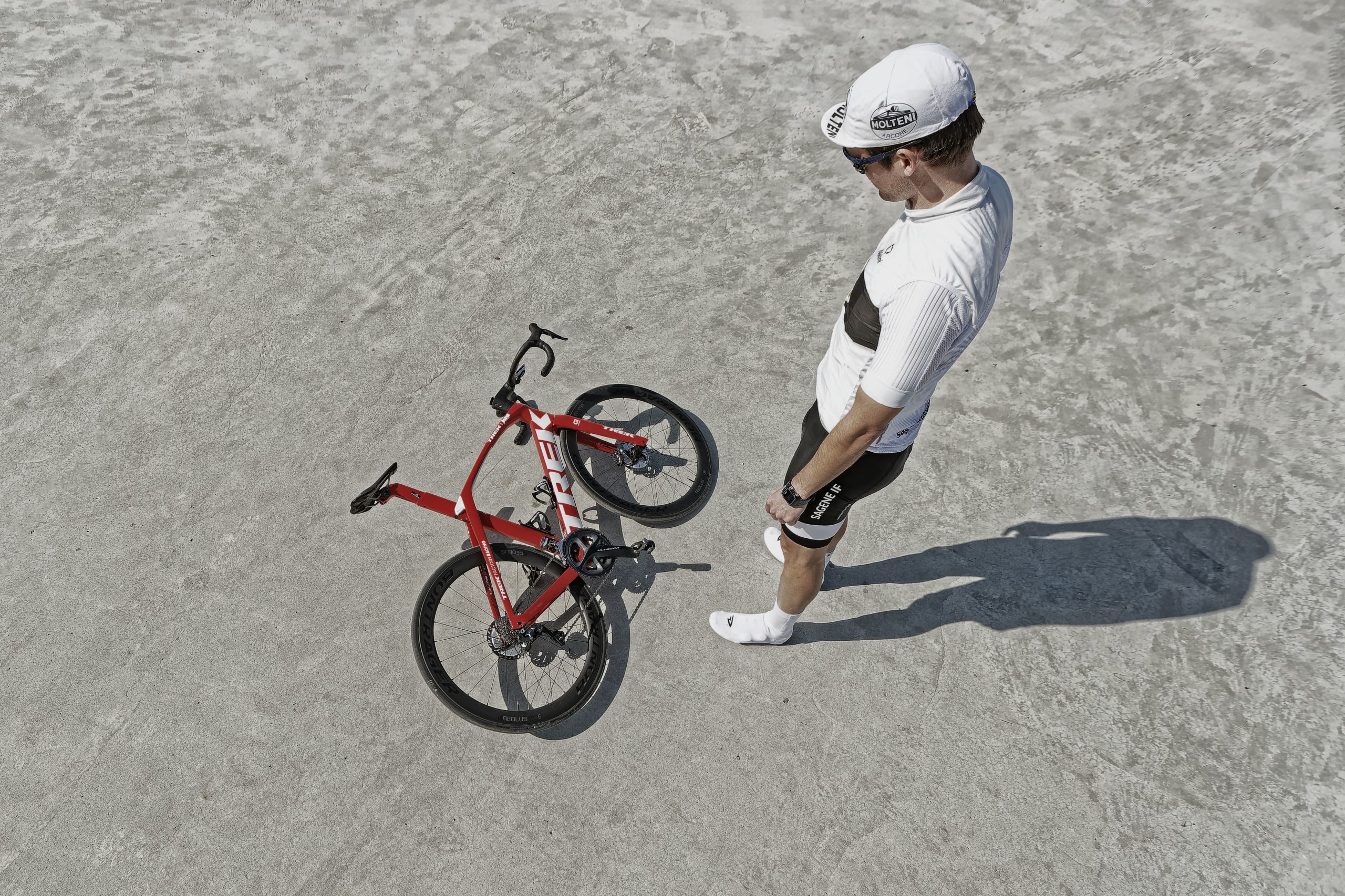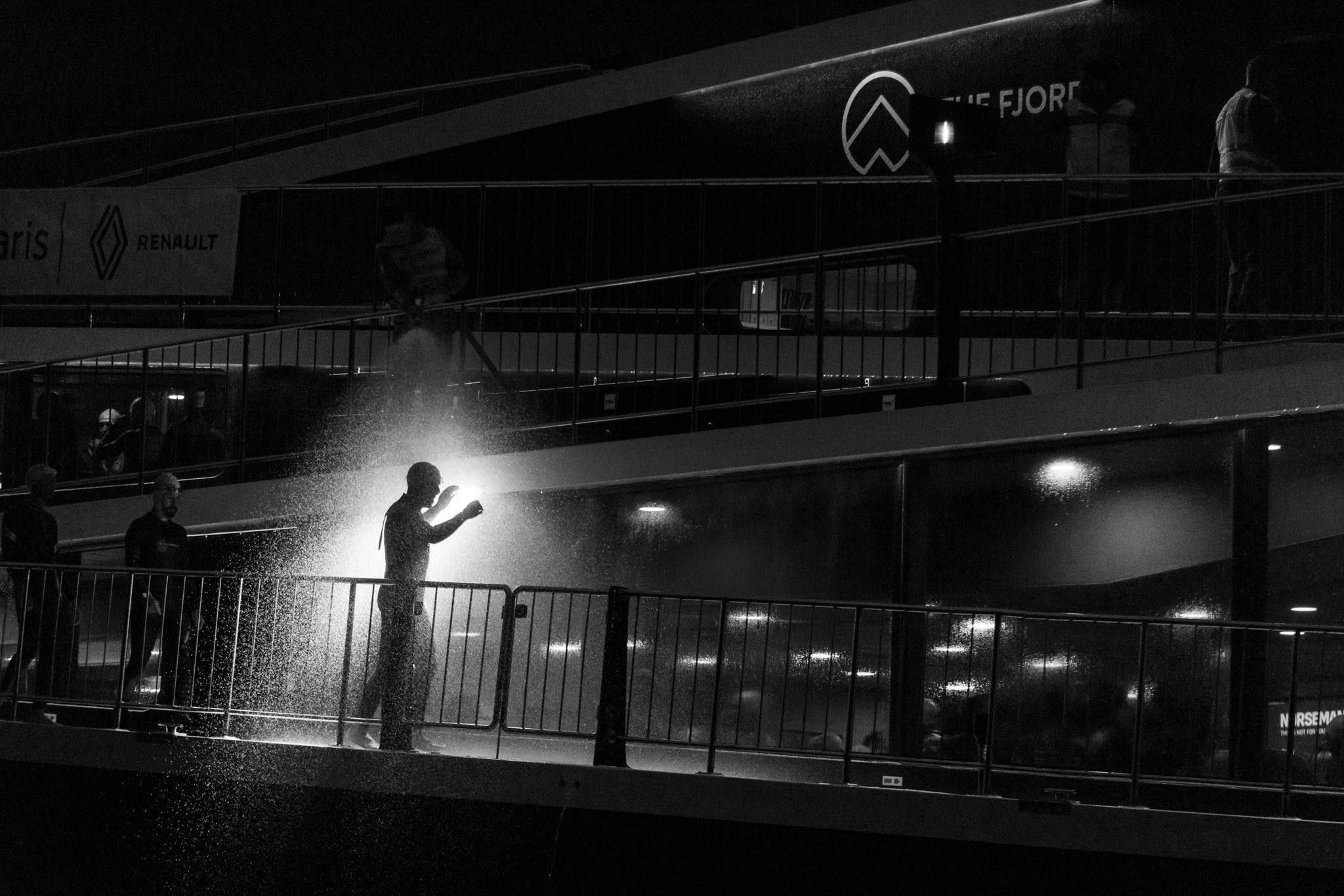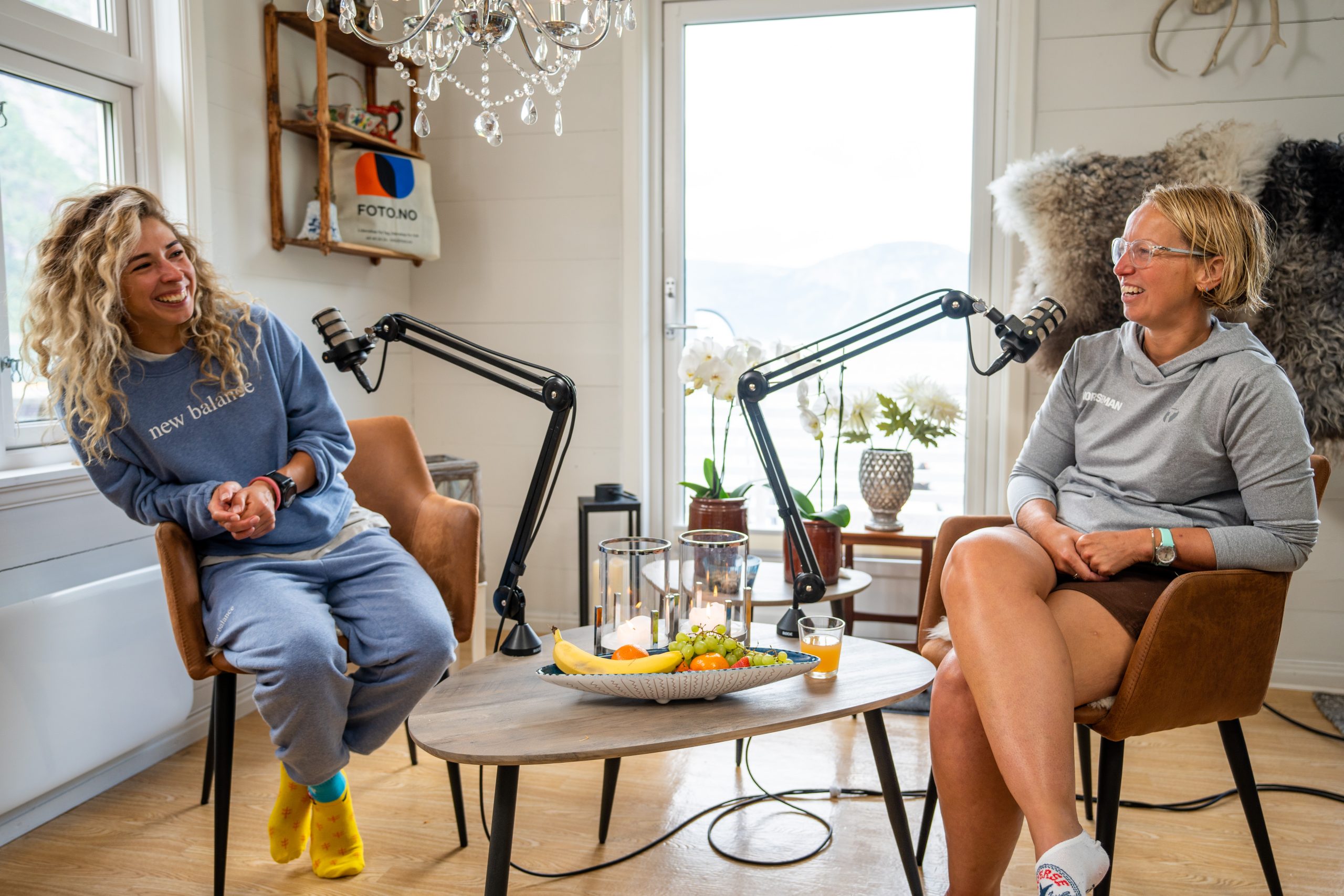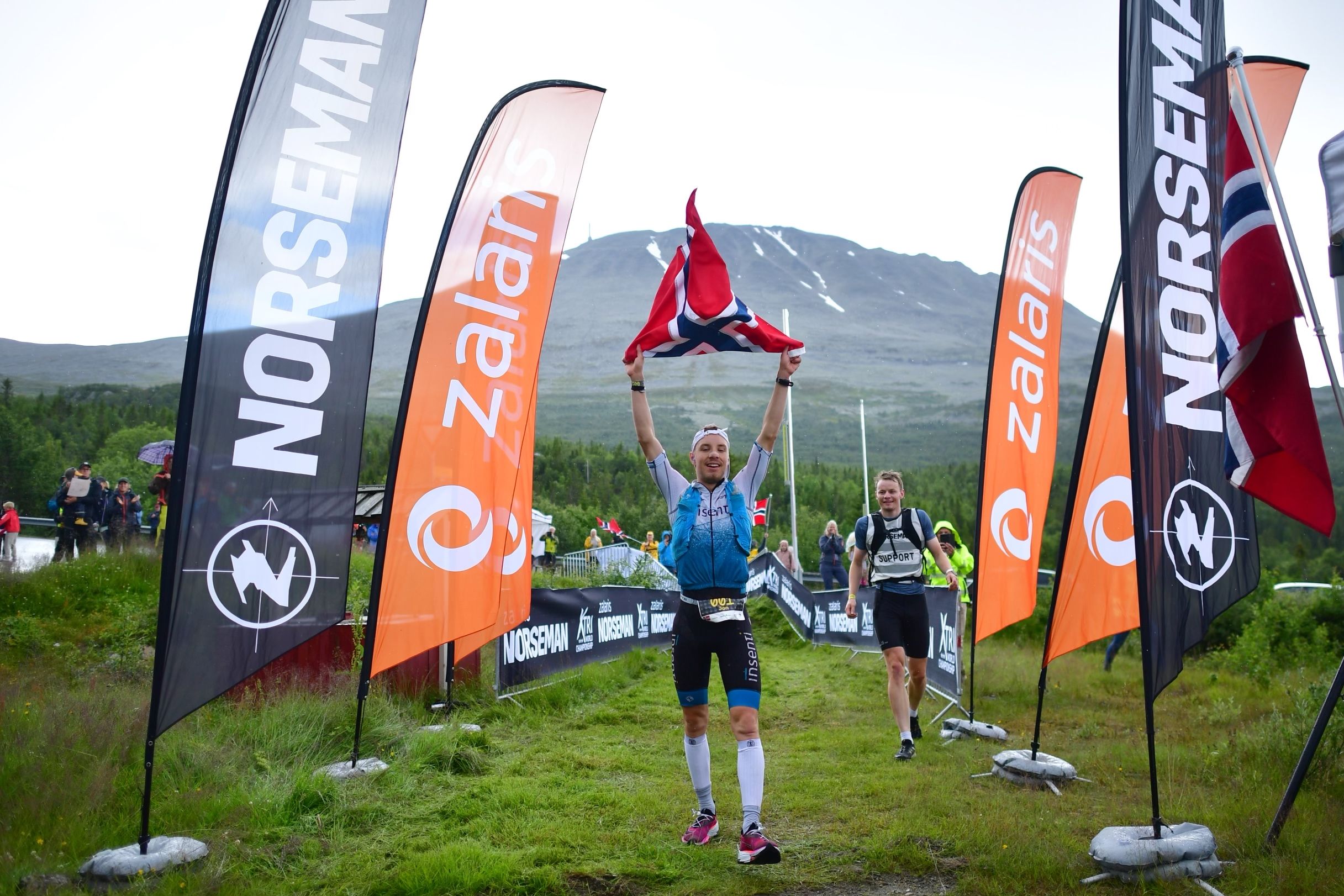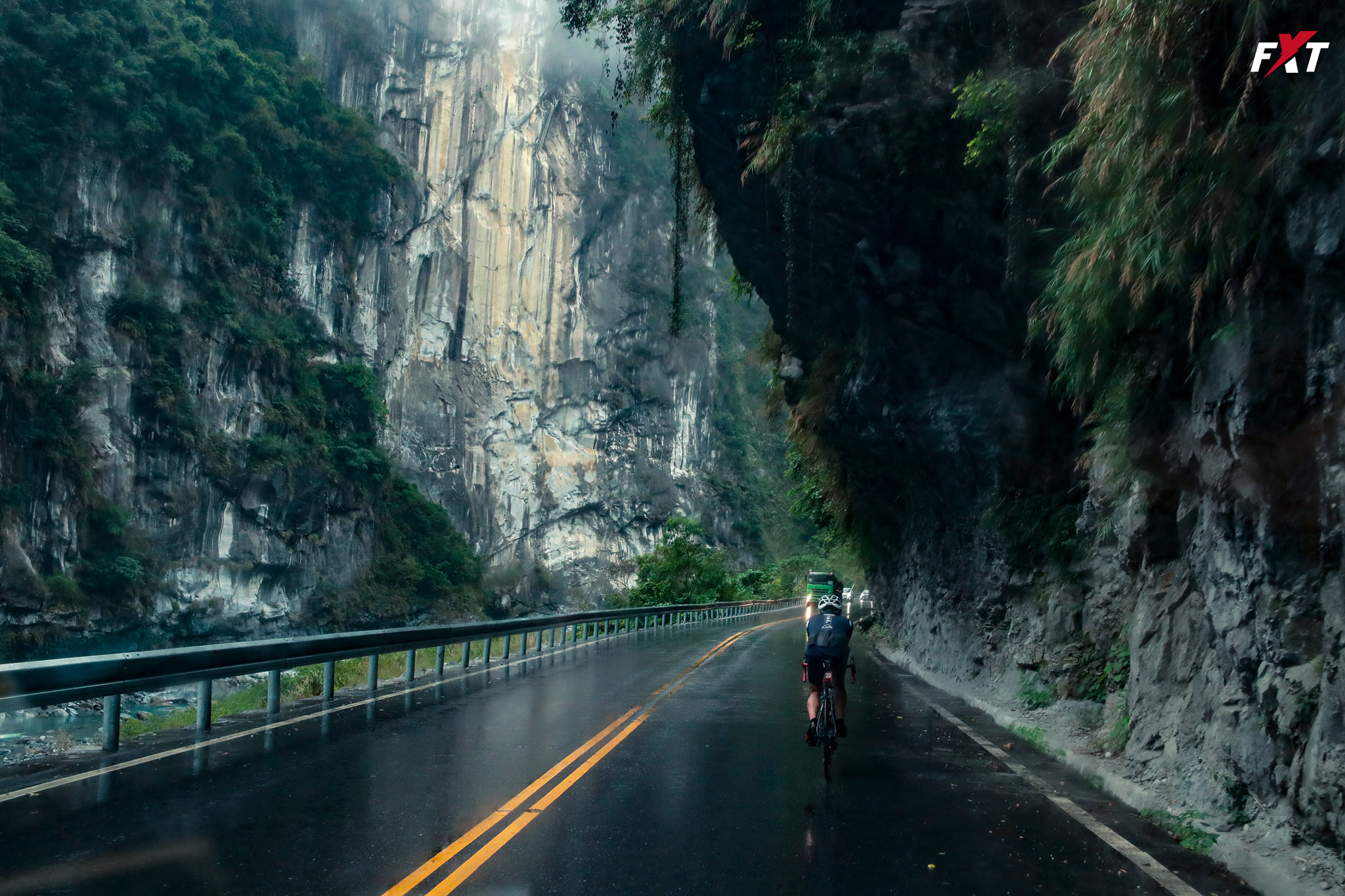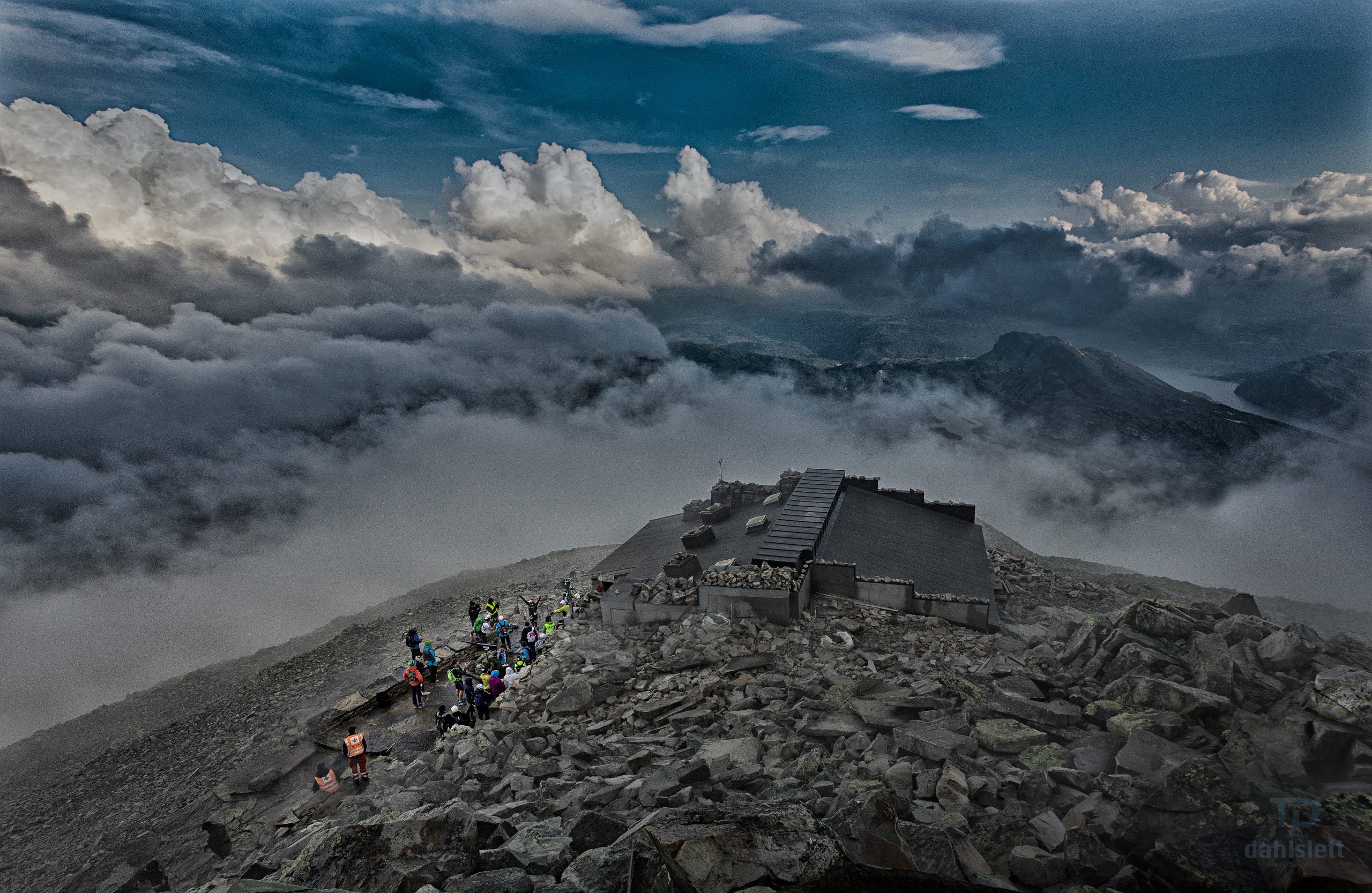The video below has the full interview. Under the video, the interview has been transcribed. Images and relevant links has been added. All the way at the bottom, references to relevant publications has been added.
Helen:
Hello and welcome to the second in a series of special Norseman live videos designed to keep you entertained and motivated during this year, while triathlon has been disrupted by the coronavirus.
I’m Helen Webster from two 220 Triathlon and today I am joined by Martin Bonnevie-Svendsen a medical doctor, and one of Norseman’s team of research experts.
In this interview we’re turning our attention to training safely and the potential impact on health and immunity during a summer when we are not racing, but may have more, or less, depending where you live, time to bike and run.
So Martin, welcome and thank you very much for joining us. I’m sure you’re very busy at the moment.
Martin:
Thanks a lot, Helen. Yes, these are strange times and quite busy for us working in healthcare.
Helen:
Martin, just tell us a little bit about yourself.
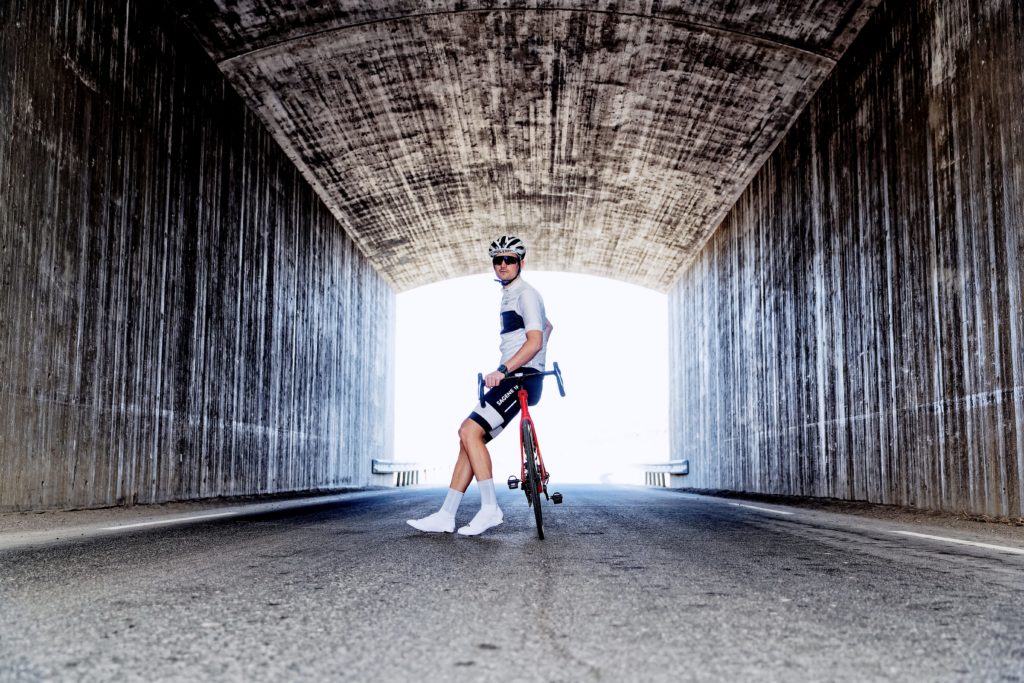
Martin:
Well, first of all, I’m a medical doctor. I’m working out of Oslo in Norway. And for the last couple of years, I’ve been fortunate enough to be taking part in the Norseman experience as a race doctor and also as a researcher. So I’m basically partaking in the research that we’re doing on the athletes participating in the Norseman event. And then I guess you could also probably call me a blogger. I run a website specifically on cycling training where I basically try to sum up some of the signs that we have on how to train most effectively. That’s the goal, anyways.
Helen:
And Martin, how can people find your blog?
Martin:
They can go to the website www.wattkg.com.
Helen:
So just to start, let’s get a bit of context. So in Europe, countries are in various stages of lockdown. So here in the UK, it’s the 18th of May we’re recording this and we’ve, in the last week, been told we can exercise as much as we like outdoors within the social distancing guidelines of two meters. How are things there in Norway? Are they similar?
Martin:
Yes, Helen, they’re actually quite similar. For us they’ve been for some time. We’re allowed to go outside given that you’re symptom-free and haven’t had any contact with any known COVID-19 cases. You’re allowed to train outside for as much as you like, given that you’re able to keep a distance of one meter from other people and you’re not supposed to have physical contact.
Helen:
So yes, a similar situation. So people have that freedom to get outside and train. And most Norseman competitors are extremely fit and they’re used to training hard. Should they continue to do so during the COVID-19 crisis?
Martin:
If I were to give a generalized answer, I would say definitely yes, as long as you’re healthy, symptom-free, and haven’t had that contact with any known or suspected cases of COVID-19, I think people in general should continue training.
The more difficult part of that question I would say is probably how hard you’re supposed to be training. And I guess the issue there is that we hardly have any data on COVID-19 cases in athletes so we don’t really know how training during this pandemic impacts our health. But what we do know from previous studies and lots of data is the detrimental effects of being inactive. So in general, I think it’s probably fair to say that it’s a sound advice to continue training.
Martin:
And then I guess it kind of depends a little bit on your local situation because some countries are still in the middle of this with increasing numbers every day and flooded hospitals, whereas other countries have seen a real flattening of the curve. And I guess the choice of how hard you want to train would probably be a good thing to view in light of the risk of contracting the disease in your local community, I guess.
Helen:
And it also depends what access people have as well because, for instance, here in the UK, the swimming pools and the legislators are still closed and likely to be for some time. But many of us have more free time to fill as well. So what if people aren’t able to access pools, gyms, other training venues? What are good things to be doing from home?
Martin:
Well, there’s a few options. I think a lot of people have had their eyes open to the use of cycling indoor trainers and the use of Swift. I see a lot of people doing the rubber band sessions to mimic their swimming. Personally, I’m a big proponent of doing resistance training or strength training in general, which is so well proven to be beneficial, both for performance, from a performance point of view in running as well as cycling and swimming. But also in order to prevent future injuries, which can be particularly relevant when you want to start back up training like normal when society opens back up. I guess you can also work on mobility work, particularly if that’s a limiting factor to your technique. That’s probably a good time to put in some more hours there. And I’m also a big fan of acquiring more knowledge. So if you do have more spare time on your hands, why not use it to listen to podcasts… to read articles or books or listen to podcasts, to learn more about how to train effectively.
Helen:
So lots of time to get onto nxtri.com and read all about Norseman, and all the fantastic races they offer.
Martin:
Indeed.
Helen:
Yeah, lots of research as well. I know the Norseman team are doing a lot of work into research, into various aspects of sport and training.
You said some people may have taken a break from regular training due to lock down. Not being able to get outside, that kind of thing. So if you´re just starting to get back to training, how should they do that safely?
Martin:
I think that one of the biggest keys would probably be patience, which is such a virtue when it comes to training. And with that, I’m thinking about basically understanding the mechanisms of injury, because if there’s anything that’s going to be detrimental to your return to normal fitness, it’s sustaining injuries. And we know that if there’s one thing that probably increases the risk of sustaining injuries, it’s that sudden spike in training load. And that spike can come from either all of a sudden training a whole lot more than you used to, but also if you, for a period of time, train a lot less than what you normally do, then bringing your load backup too quickly is going to create a relative spike.
So I think in terms of returning safely to normal training when things start opening back up, the advice would be to try and prevent that deep training state in the first place by maintaining some training as well as you can. And then once you start back up and you want to get back to your normal volumes, if they’ve been lower, then you just need to be a bit patient in bringing that volume back up gradually. That would probably be my best advice.
Helen:
Okay. And can you tell us a little bit more about the impact of training on the immune system? Because immunity is something that people are talking about a lot at the moment as well.
Martin:
Yep. That’s certainly an area with a lot of research to it, but where we still have a lot of controversy. I guess if I were to try and sum it up, most of the reviews, when you look at the science, they basically suggest that when you do short and moderate training sessions, that’s been shown to cause a temporary increased surveillance activity of the immune system, which when repeated, we’re thinking that this causes decreased incidents and duration of disease like upper respiratory tract infections, for an example. Whereas, the more longer and severe training is thought to perhaps increase the susceptibility to infections.
But particularly that last point is a bit controversial. It’s called the open window theory where that severe or prolonged exercise is thought to, just for a short time after training, basically lower your ability to withstand the infections. But there’s been quite some work in the last couple of years that challenges that open window theory, which has been sort of an established truth, I guess, for a lot of people for a while. But I see more and more authors challenging that notion.
So I guess the jury is still out on that part, but we can say with quite some certainty that being physically active and engaging in regular exercise has so many positive health benefits… That’s the main takeaway, I would say.
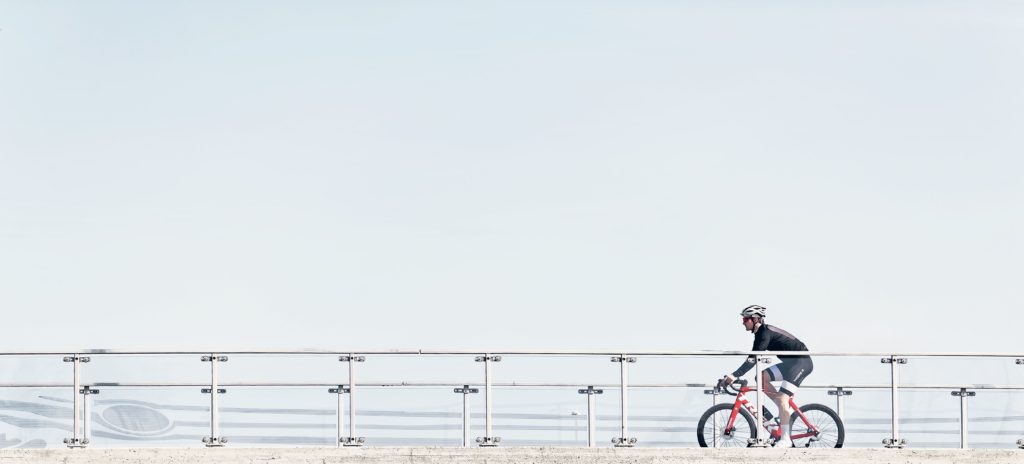
Helen:
And it’s a good takeaway. It’s good positive news.
Okay. So most triathletes will have a Suunto or a similar brand sports watch, and they’re used to monitoring their statistics when they’re training. How can we use those to keep an eye on our health and training load at the moment?
Martin:
Well, there are basically two parts to that question. One is basically monitoring your health. And I guess if you’re concerned about an acute infection then certainly your heart rate is a relevant parameter to monitor. It’s basically one of the key physiological signs that we clinically look for when we’re trying to identify people who may or may not have an infection. So, for instance, if you know your normal… or you don’t even have to know your normal resting heart rate. From a clinical point of view, we always start getting suspicious if people have a resting heart rate above 90 beats per minute or close to those 90. So most people, as a point of reference, will have a… or athletes will usually have a resting heart rate of somewhere between 40 to 60. So that’s something to just pay attention to.
And then there are so many other advanced functions of the new watches. Some give you a count of respiratory rate. I can’t account for how valid those measures are but if they… respiratory rate too, like heart rate, is something that we look really closely into, from a clinical point of view. So a normal respiratory rate would be between 12 and 20 cycles of respiration per minute for an adult. And if that respiration starts rising above 20 and particularly above 22, then we start maybe suspect suspecting that there’s some sort of disease process going.
And then you spoke about training load. I’m a big fan of keeping things simple, stupid. I would probably… If you don’t do anything in terms of tracking your training load yet, I would probably go for a combination of how many kilometers you’ve run or cycled or swam and/or how many hours you’ve trained. Some sort of measure to account for your training volume. And in addition to that, one of the heart-rate-based training stress scores that you get with all the software that people are using now, either TrainingPeaks or Today’s Plan or Strava, you can get a score based on your heart rate measure from each session. And if you have those measures, then that will give you a really decent image of your late training load.
Helen:
So we’ve spoken a lot about how much people can train, but it’s a stressful time for people in some parts of the world at the moment and they might be feeling a bit demotivated, they might be fed up, they might not want to train without those kinds of races on the horizon for 2020. What impact will detraining have, especially on things like health and mental wellbeing?
Martin:
Yep. I think there’s certainly a real possibility that we as a society or people in general, maybe suffering consequences of inactivity. We know with quite some certainty that this whole situation causes increased stress on people. Isolation causes stress and reduced physical activity. That combination of impacts, I guess, may quite possibly leading us into declining health as a group.
I think as a group, triathletes are usually quite proactive and will get some parts of the training in anyway. So that’s not the group that I’m most worried about in terms of suffering the effects of inactivity. But that being said, people can be… I mean, these are stress quite stressful time for the people. People are concerned about their loved ones. And there are triathletes that might have risk factors. Even though you’re fit and healthy, you might have some underlying risk factors for this disease. So it’s not to be trifled with that people can get affected both physically and mentally.
In terms of what we can do about it, like many other athletes, I’m bummed that my A races this year isn’t going to happen. So one of the things I would encourage people to do, something that I’ve done myself is to try and make up adventurous workouts that you normally don’t have time to do, or that you can’t prioritize because you’re so worried about being structured and chasing those marginal gains that maybe most of us won’t really need this year. So what I would recommend is perhaps making use of the outdoors and going places that you normally won’t be available to go to. Doing long rides; I see a lot of people doing bike packing, bringing their gear on their bikes and going for long rides for several days; that kind of stuff. It’s certainly [inaudible 00:16:16] to do so, as long as you within the rules and regulations of your local authorities.
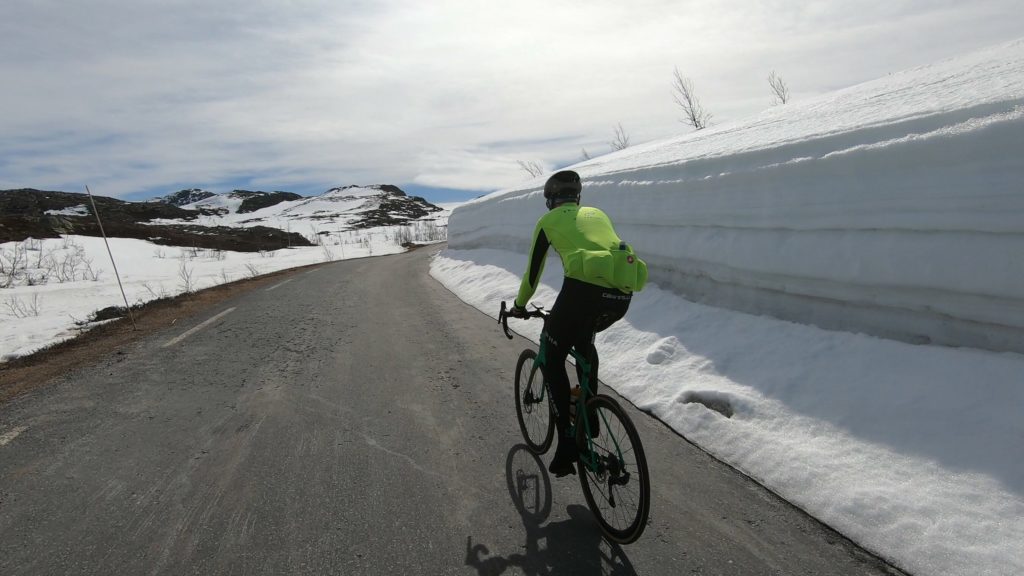
Helen:
Yeah that’s quite a handy lead into my next question, actually, Martin. So here in the UK, we have a two-meter-apart rule. And in Norway I think it’s one meter, is that right?
Martin:
Correct.
Helen:
Do you think that rule is appropriate? I mean, I’ve seen suggestions here in the UK that it should be 10 meters because when you’re running hard or cycling hard, for example, you’re breathing more heavily. What do you think of that?
Martin:
Yeah, that’s a good question. I think as an intro to that answer, I think we need to try and recognize where that recommendation comes from. And I would suspect that the government… In a case like this during a pandemic, the government has a need to give few and simple pieces of advice, basically so that people actually remember them. And the one to two meter rule is definitely in line with what we know about how droplet transmission behaves, which is how I think the coronavirus is transmitting. So those recommendations are, from my point of view, in line with how droplet transmission behaves. And then there will most likely always be cases where logical sense dictates that you may want to use more separation than one or two meters. And running and cycling is certainly among those examples, I think.
So I actually think the Norwegian… Here in Norway, we have generalized recommendations like that. And then each athletic federation has their own set of guidelines and recommendations. And I really think the Norwegian Triathlon Federation hit the nail on the head with their recommendation, which is basically… they recommend that you don’t ride in groups. And if you need to ride in a group, then try and make it a training partner that you’re with consistently during this period, instead of swapping training partners all the time. And they also suggest that if you’re running, you should have at least one meter of distance, implying that if you can make it more than one meter, then that’s even better.
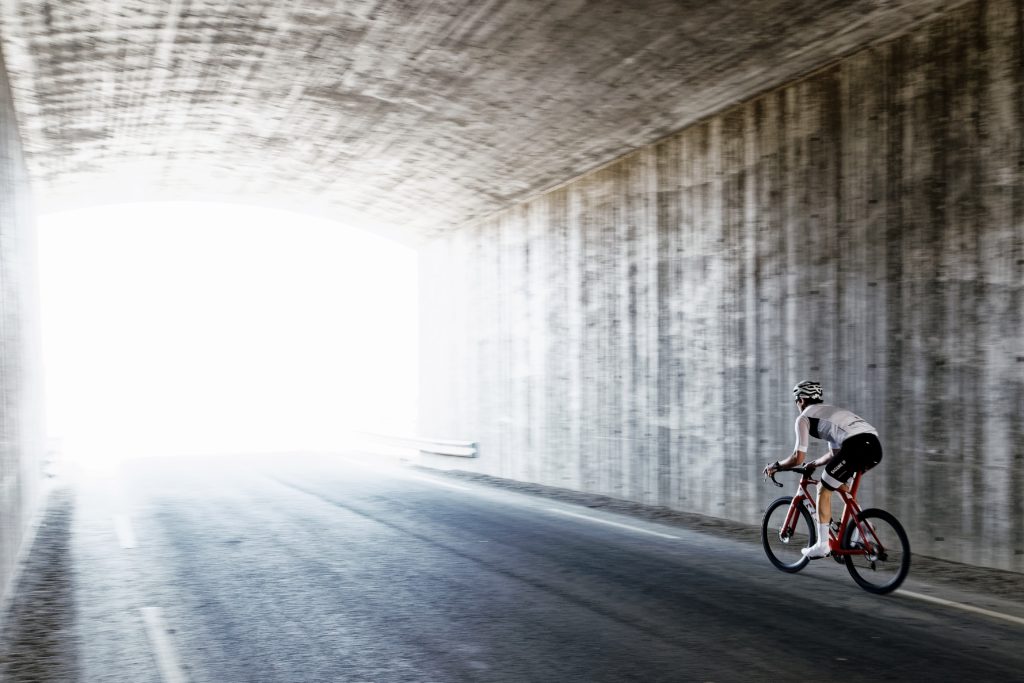
Helen:
Many cyclists are avoiding riding outside at the moment as they are concerned about having an accident when health services are already stretched. Is indoor training a better option or is there a risk that people could push too hard using smart training systems?
Martin:
I think it’s a really good notion to be mindful not to stretch the healthcare system more than necessary. I mean, is there ever a good time to have a traumatic injury? Probably not, but certainly not during the corona pandemic. Again, situations are changing quite rapidly. So whether you should completely avoid riding outside at the moment, I think I would say it would depend on where you are and how the situation looks like.
Martin:
Here in Norway at the moment, all hospitals are operating with green codes, meaning that they have complete, almost normal availability of staff. They haven’t heightened the level of resources they mobilize. So things are pretty much like normal. So it wouldn’t be such an issue if you were so unlucky to cause a traumatic injury at the moment. But of course, if you’re in a situation like that we had in Northern Italy a few months back where everything is in lockdown and the hospitals are flooded with patients – if that’s the situation, then quite obviously I would be a lot more careful if I were to ride outside, at the very least. And I think indoor trainers are great. You can do so much good work on them.
In terms of training too hard, that’s a really good question because we don’t really know how this virus affects athletes. And there’s certainly the possibility of going for a training session and having been so unlucky to contract the disease and still being in the incubation period, which lasts for quite a few days. But that’s a really tricky question to answer because we don’t really know. I think probably my best advice would be to be mindful of your surroundings. If you have had contact with people who have symptoms, or can be suspected to have the coronavirus or knowingly have the coronavirus. I think that that’s maybe a good course for taking some care in how hard you train. And maybe this isn’t the time to do the most extreme obsessions or the greatest training load over time. But besides that, as long as you’re healthy and you don’t have any suspicion of contracting the disease and you don’t have symptoms, I wouldn’t be too worried about training moderately. Oh, that was a long answer without really answering it.
Helen:
But you mentioned the symptoms of coronavirus and testing is in different stages globally as well. I mean, here in the UK, you can’t get a test unless you’re a key worker. So what symptoms should triathletes be looking for, if they’re worried that they may have caught the coronavirus, but they don’t know for sure?
Martin:
Yeah. The thing you need to be aware of there is that we really can’t… There are no symptoms that can definitely tell that you have the coronavirus. But because basically nearly any symptom of an infection could be representative of the coronavirus. But of course the cardinal symptoms that we see people get are those that come with common, upper respiratory tract infections, such as a sore throat, dry cough, the general feeling of being unwell, having a fever. And then there’s also reports of people losing smell and taste as long with stomach pain and also cases of diarrhea. And then it’s always the question, “Okay, do they have two things at the same time or is it all the coronavirus causing it?” We don’t really know, but basically any sign of an upper respiratory tract infection, you should be mindful that you may have caught it.
Helen:
And we know triathletes are always super keen to get back to their training. So if a triathlete has definitely had the virus or thinks they may have had the virus, how and when should they return to training?
Martin:
That’s also maybe the most pertinent question in these days, I think. Again, the challenge is that we really don’t know enough. We want more information, but there have been some authors… there was an article published in the very prestigious journal called The Lancet, rather a few weeks ago, I think, who dared to make some recommendation, which I thought were quite sensible. And basically what they recommended was that… The thing is, it’s useful with some context here, because what we know is that we know very little about the longterm consequences of this disease. And we also know from experience that there’s a tendency for those… Most people just get a mild course of disease. That’s basically the big bulk of people that get sick, but then there are some who get worse, and those people tend to have a flare up with declining condition after day seven to nine.
The thing that’s a bit concerning here is that you can feel that you’re almost good. “Okay. I’m over this” at day five and six, and then you can get worse again at day seven. So the kind of worst case scenario would be to kind of feel that you’re getting well again at day six, and then go and do a really hard session. And then maybe you were on the brink of getting worse again. So basically, that’s what we want to avoid. So I think that calls for a bit of a conservative approach in terms of return to play or return to training.
What the authors here suggest is that return to play or training should wait at least 10 days from symptom onset in addition to seven days after having symptoms resolution. So we’re basically adding quite a few days to after symptom resolution compared to what an athlete would normally apply. But again, that’s a pragmatic recommendation that’s probably based on a rather weak knowledge base, because we don’t have a whole lot of information at this point in time, but we’ve got to go with something, right? So I think those are probably quite sensible guidelines. And then they might change later on.
Helen:
Sure. And as I was saying that there’s a lot we don’t know about this disease and research is moving very quickly. But what about going into next year? Will triathletes that have had the coronavirus be able to race next year, and do we know if it’s safe for them to push their bodies that hard?
Martin:
That’s an even harder question to answer, Helen, because again, this is just something that we… it’s new ground. We really just don’t know how the body is affected longterm from the coronavirus. What we do know is that most people who get sick get a mild course of injury with symptoms in their upper respiratory tract only. And I would say if you were to have that scenario, I would be surprised if you couldn’t go back to normal training and racing for next year.
That might be somewhat different if you’re one of the unlucky few who contract the severe pneumonia, and we also know that this virus has the potential to affect the other tissue as well, like your heart and the nervous system and other organs. So for those with a really serious course of injury, it’s basically hard to tell. We don’t know. But fortunately, the majority of people who contract the disease do have a mild course of injury. So in that sense, I guess you could say I’m optimistic about racing for most people in 2021, but we need more knowledge and there’s more knowledge coming out every week now. So that’ll be really interesting to see.
Helen:
Sure. And I’m sure that the guys at Norseman will be releasing any kind of information through nxtri.com as it kind of comes up and becomes apparent. And certainly, if you’re concerned about anything about training or racing, then probably your GP is the best person to speak to.
Martin:
Yeah, definitely. Always. If you’re concerned about your own health or even with training issues, registered healthcare personnel such as the GPs is the one to see.
Helen:
And Martin, as a medical professional, what are your top tips for triathletes to make sure they’re taking the best care of their health when training and racing as we look forward to 2021 and things becoming a bit more normal?
Martin:
The thing that’s always underestimated, I feel, is just basically good habits of sleep, stress management, getting good nutrition, staying hydrated, resting. I guess that’s basically one of the things that we can address that we know will do us good, both in terms of training and performance, as well as mentally and general health. So I would stay physically active, maybe not do the hardest periods of training in your life at this point in time, but definitely do keep training. Of course, the rather tiresome advice of socially distancing and washing hands and following the guidelines basically of local authorities because there might be some differences there, depending on where you are and where you live. But these are strange times, but we need to kind of find some middle ground because we’re most likely going to be dealing with this COVID-19 issue for some time into the future and we need to kind of find reasonable ways of getting back to normal life. So do get your training in, as long as you don’t have symptoms and as long as you aren’t suspicious of having the disease.
Helen:
Finally, Martin, what are your hopes for next year and what are you most looking forward to being able to do again?
Martin:
I actually really look forward to being able to see patients without wearing a space suit, as well as family and friends, of course. I miss training with other people in groups as well. And what I really look forward to is international travel, opening up again so that I can take my bike and go exploring new places. That’s going to be something that I look forward to, definitely.
Helen:
Yeah. I think that’s certainly the case for lots of us. And we’re kind of missing getting out there and seeing the beautiful scenery at some of these races and the kind of wonderful things that they have to offer.
Helen:
Thank you, Martin for this interview. It’s been such a pleasure to talk to you and-
I think everyone watching has found this interview insightful and reassuring and can use this advice to train safely until they can see you all in Eidfjord again next year.
If you missed our previous interview on open water swimming and the new Norseman swim code, then you can find it at nxtri.com, where you can find all the latest news on Norseman as well. Plus, keep checking out our Facebook, Instagram, and Twitter feeds for inspiration, motivation, and the best training advice.
I’m Helen from 220 Triathlon for Norseman LIVE. Thank you so much for joining us.
Related reading:
- Coronavirus disease (COVID-19). Situation Report – 117. World Health Organization.
- Hull JH et al. Respiratory health in athletes: facing the COVID-19 challenge. The Lancet Respiratory Medicine, 2020
- Nieman DC & Wentz LM. The compelling link between physical activity and the body’s defense system. Journal of Sport and Health Science, 2019;8(3):201-217
- Campbell JP & Turner JE. Debunking the myth of exercise-induced immune suppression: Redefining the impact of exercise on immunological health across the lifespan. Frontiers of Immunology, 2018;9:648
